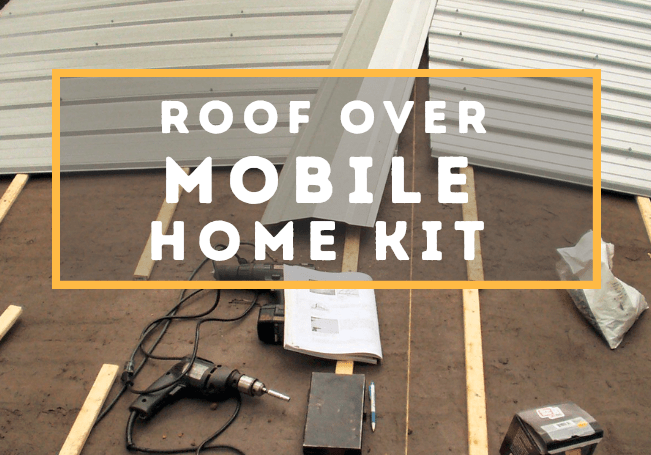Enhancing the lifespan of your mobile home, often referred to as a manufactured home, involves several key factors, with roofing being a critical component. A roof-over-mobile home kit offers a durable, cost-effective, and energy-efficient solution for your roofing needs.
By using this option, you can fortify your mobile home against the elements while ensuring long-term savings on maintenance and energy costs. The kit not only improves the overall durability of your home but also enhances its aesthetic appeal.
Understanding a Roof Over Mobile Home Kit
A roof-over mobile home kit is a comprehensive set of materials designed to upgrade or replace your home’s roof. This kit is tailored to endure harsh weather conditions, enhance insulation, and significantly extend the longevity of your mobile home.

Apart from enhancing durability, it also adds to the aesthetic appeal of your mobile home, making it look new and well-maintained. The kit typically includes components like roofing materials, insulation, and instructions for installation.
Assessing the Condition of Your Mobile Home Roof
The initial step in considering a roof over a mobile home kit is to assess your roof’s current condition thoroughly. This evaluation involves several key steps:
● Visual Inspection
Check the roof’s surface for noticeable signs of wear and tear. These may include peeling paint, rust spots, patches of mold or moss, cracks, and other visible damage.
● Checking for Leaks
Look for stains or watermarks on the interior walls and ceilings. These signs often indicate a leak in the roof. Identifying and addressing any leaks before installing a new roof is critical to prevent future complications.
Read also: How to Choose the Best Sealant for Metal Roof Leak
● Structural Integrity
Examine the roof for signs of sagging or deformation, which can suggest structural weaknesses. If you notice any sagging or irregularities, it’s advisable to consult with a professional.
● Insulation Check
Poor insulation can lead to higher energy costs. If your home struggles to retain heat in winter or stay cool in summer, it may be due to inadequate roof insulation.
Read also: Attic Insulation Cost per Square Foot
Choosing the Right Kit
Choosing the appropriate roof over a mobile home kit demands careful deliberation. You must balance the material’s durability, cost-effectiveness, and insulation properties.
Options range from aluminum, which is lightweight and durable, to rubber, known for its superior insulation. The choice depends on your needs, local weather conditions, and budget.
Step-by-Step Installation Process
Installing a roof-over kit can be a considerable task. Here’s an overview of the process:
● Preparation
Begin by measuring your roof to determine the size of the roof over the kit. Next, clean the existing roof and repair any damage to ensure a smooth and secure installation.
● Insulation
Once your roof is prepared, install the insulation layer. This layer enhances your home’s energy efficiency by reducing heat transfer.
● Installation of Roof Panels
After the insulation, install the new roof panels. They should be securely fastened and sealed to prevent leaks and wind damage.
● Sealing and Finishing
Once all panels are in place, seal the edges and seams for protection. Depending on the material, you may also need a protective coating.
Maintenance of Mobile Home Roofing Solution
Consistent maintenance is vital for the longevity of your mobile home roofing system. Key maintenance tasks include checking for leaks, clearing debris, and verifying the effectiveness of the insulation.
You should also check for rust and apply a protective coating for metal roofs. Regular maintenance not only extends the lifespan of your roof but also helps maintain its aesthetic appeal.
A roof-over kit is a practical and cost-effective solution for enhancing the durability of your mobile home. It protects your home from the elements, improves insulation, and adds value to your property.
By assessing your roof’s condition, choosing the right roof over a mobile home kit, and following a proper installation and maintenance routine, you can enjoy a safe and comfortable mobile home for years.


